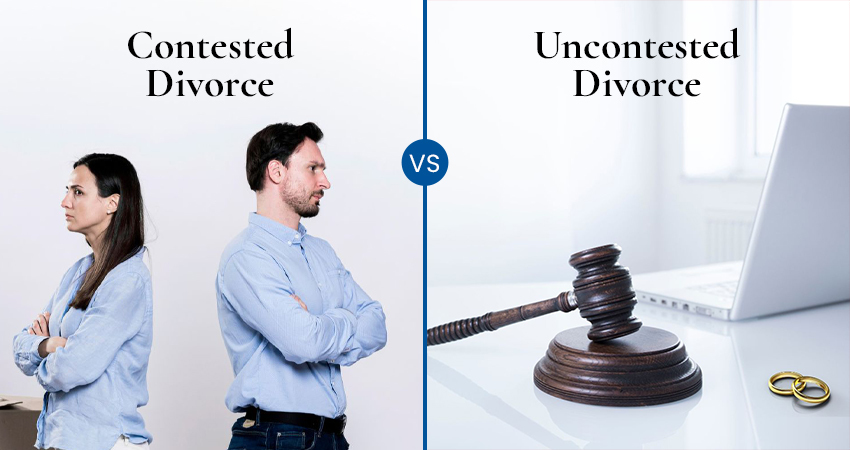Mutual Consent Divorce: Everything You Need to Know
Introduction
If you’ve ever wondered what is divorce by mutual consent, you’ve come to the right place. Divorce by mutual consent, often called uncontested divorce, is a streamlined legal process that allows both spouses to end their marriage peacefully—provided they agree on every aspect of the divorce settlement. This comprehensive guide will walk you through the essentials, from legal definitions to critical steps, common questions, and beyond.
Table of Contents:
- Understanding the Basics: What Is Divorce by Mutual Consent?
- Advantages of Mutual Consent Divorce
- Legal Framework and Requirements
- Key Steps in Filing for Mutual Consent Divorce
- Important Factors to Consider
- 5 Common Questions and Answers
- Financial Aspects and Settlements
- Child Custody and Support Agreements
- Role of Attorneys in a Mutual Consent Divorce
- How Long Does the Process Take?
- After the Decree: Post-Divorce Considerations
- Working with The Law Office of Bobbie Young
- Final Thoughts and Call to Action
By the end of this article, you’ll thoroughly understand divorce by mutual consent and how to navigate the process successfully. Let’s begin!
1. Understanding the Basics: What Is Divorce by Mutual Consent?
When spouses agree that their marriage is no longer sustainable, they can choose a path that is less adversarial than a traditional, contested divorce. This type of dissolution is broadly known as mutual consent divorce or uncontested divorce. In many jurisdictions, it refers to a scenario where both partners voluntarily decide to terminate their marital relationship under agreed-upon terms.

The question “What is divorce by mutual consent?” often arises from people who are tired of prolonged legal battles or the emotional trauma associated with contested divorces. Mutual consent divorce can be considered the most amicable form of divorce, as it requires spouses to collaborate on a range of critical issues, including:
- Division of marital assets and liabilities
- Alimony or spousal support
- Child custody, visitation, and support (if applicable)
- Any additional arrangements, such as who retains the family home
Because both spouses acknowledge that the marriage is irretrievably broken and are willing to cooperate, mutual consent divorce typically proceeds with fewer complications. It reduces the duration of the legal process.
2. Advantages of Mutual Consent Divorce
Opting for a mutual consent divorce offers several distinct benefits:
- Reduced Stress and Conflict: There is minimal conflict when both parties agree on significant issues. This helps create a more positive environment, especially if children are involved.
- Lower Legal Costs: Legal fees are significantly lower than in contested cases because there are fewer courtroom battles and contested motions.
- Privacy and Confidentiality: Negotiations happen more discreetly, often through private meetings with attorneys or mediation, rather than in open court.
- Faster Resolution: Eliminating much of the back-and-forth of a contested divorce can considerably shorten the timeline for finalization.
- Greater Control: By collaborating, both parties maintain control over the divorce settlement terms rather than leaving those decisions to a judge.
3. Legal Framework and Requirements
The legal framework for mutual consent divorce varies by jurisdiction, but some universal principles exist. Typically, a mutual consent divorce is based on:
- Agreement: Both spouses must agree that the marriage should end and align on how they will handle key issues (assets, custody, support, etc.).
- Residency Requirements: Courts often require that at least one spouse be a resident of the state or country for a specified period.
- Waiting or Separation Periods: Depending on where you live, there may be a mandatory separation or waiting period before the divorce can be finalized.
- Documentation: Both parties must file the necessary paperwork, including but not limited to petitions, settlement agreements, and financial disclosure forms.
Consulting an experienced family law attorney is crucial. They’ll ensure the paperwork is filed correctly, help you understand local regulations, and guide you through the negotiation process.
4. Key Steps in Filing for Mutual Consent Divorce

- Initial Consultation: Both spouses may independently or jointly discuss the divorce with an attorney to understand the legal implications.
- Drafting the Settlement Agreement: In a formal agreement, spouses outline the terms for dividing assets, spousal support, child custody, and more.
- Filing the Petition: The divorce petition and settlement agreement are submitted to the court. Both parties’ signatures are generally required.
- Court Hearing (If Required): In some jurisdictions, an informal hearing confirms that both spouses willingly agreed to the terms.
- Decree of Divorce: Once the court is satisfied that all conditions are met, it issues a divorce decree or final order, formally dissolving the marriage.
5. Important Factors to Consider
Before proceeding with a mutual consent divorce, it’s essential to consider:
- Emotional Preparedness: Even an amicable divorce can be emotionally challenging. Both spouses should reflect on whether they are genuinely ready to move forward.
- Financial Disclosure: Transparency is crucial. Hiding assets or misrepresenting financial information can invalidate the agreement.
- Children’s Well-Being: Child custody arrangements should be carefully structured to prioritize the best interests of any children involved.
- Tax Implications: Property transfers, spousal support, and child support could have tax consequences. Consult with a tax professional for clarity.
- Legal Representation: Each spouse should seek independent legal advice to avoid conflicts of interest.
6. 5 Common Questions and Answers
In this section, we address some of the most frequently asked questions related to what is divorce by mutual consent and how it works:
1. What is the timeline for the mutual consent divorce process?
- The timeline can vary depending on where you live, but mutual consent divorces are generally faster than contested divorces. Some jurisdictions require a cooling-off period of several months, while others may finalize the divorce within a few weeks to a few months once all paperwork is in order.
2. Can the settlement terms be changed after the divorce is finalized?
- Generally, the settlement terms become binding once the court issues the final decree. However, modifications to child custody and support can often be revisited if circumstances change significantly. Depending on your jurisdiction, spousal support may also be modifiable under certain conditions.
3. Do both spouses need to appear in court?
- In many mutual consent cases, only one spouse may appear in court (or neither, if the law allows remote or paper-based proceedings). However, some courts require both spouses to confirm their mutual agreement in person or via an affidavit. Always check with your local court rules.
4. Is mutual consent divorce recognized in every jurisdiction?
- Most jurisdictions recognize some form of uncontested or mutual consent divorce. Still, requirements such as residency periods, mandatory separation, or waiting periods can differ significantly from one place to another. Consulting a local attorney is the best way to understand how these regulations apply to you.
5. Do we each need our attorneys?
- While not always a legal requirement, each spouse should consult legal counsel. This ensures that both parties’ interests are adequately represented and that no conflict of interest arises if only one attorney drafts the settlement terms.
7. Financial Aspects and Settlements
No divorce is complete without addressing financial matters. In a mutual consent divorce, these negotiations happen in a structured, collaborative setting:
1. Asset and Debt Division
- Couples must decide how to divide marital assets (real estate, cars, bank accounts, retirement accounts, investments) and liabilities (mortgages, credit card debts, loans).
- Both parties typically disclose all assets and liabilities. This transparency ensures a fair distribution.
2. Spousal Support/Alimony

- Alimony is determined based on factors such as the duration of the marriage, each spouse’s earning capacity, and the standard of living during the marriage.
- Since this is a mutual consent scenario, both spouses agree on whether support is required, its duration, and the amount.
3. Retirement Accounts and Future Benefits
- Courts often require a Qualified Domestic Relations Order (QDRO) to manage the division of retirement accounts.
- Both parties must carefully weigh the long-term implications of dividing pension benefits or other retirement assets.
4. Tax Considerations
- Property transfers, the timing of the divorce, and alimony payments can have tax implications for both spouses.
- Consult a financial advisor or tax professional to ensure you maximize tax benefits and comply with all regulations.
8. Child Custody and Support Agreements
One of the biggest concerns for parents pursuing what is divorce by mutual consent is the well-being of their children. When both spouses communicate effectively, they can design a custody arrangement that best meets the children’s needs while reflecting each parent’s circumstances.
1. Custody Types
- Legal Custody: The right to decide about the child’s upbringing (education, health, religion).
- Physical Custody: Where the child lives.
- Joint Custody: Both parents share legal and/or physical custody.
- Sole Custody: One parent has primary decision-making authority, and/or the child lives predominantly with one parent.
2. Visitation Schedules
- Parents decide on schedules for weekends, holidays, and vacations.
- The schedule should be flexible enough to accommodate changes in work schedules or other life events.
3. Child Support
- Typically calculated based on both parents’ income, the child’s needs, and the custody arrangement.
- Even in a mutual consent scenario, state or jurisdictional guidelines for child support generally apply, though some flexibility in how support is structured may be possible.
4. Best Interests of the Child

- Courts prioritize the child’s well-being above all else.
- Evidence of cooperation between parents can factor favorably in custody and support decisions.
9. Role of Attorneys in a Mutual Consent Divorce
When considering what is divorce by mutual consent, people sometimes assume lawyers are optional because the process appears straightforward. However, attorneys play an invaluable role in ensuring each step is carried out correctly:
1. Legal Guidance
- An attorney explains your rights, obligations, and potential pitfalls.
- They can help prepare and review the settlement agreement for fairness and compliance with the law.
2. Negotiation and Mediation
- Lawyers facilitate productive discussions, assisting both parties to arrive at balanced decisions.
- Mediation is sometimes used to resolve disputes, with an attorney on each side providing counsel.
3. Drafting and Filing Court Documents
- Precise document drafting reduces the risk of rejection by the court.
- Mistakes in paperwork can delay the process, so professional oversight is beneficial.
4. Court Representation
- Should any disagreements arise, attorneys can advocate for your interests in court.
- Court appearances may be minimal in many mutual consent cases, but having counsel ready is a safeguard.
10. How Long Does the Process Take?
A mutual consent divorce can be finalized in weeks or months, depending on your jurisdiction’s regulations. Key factors that influence the timeline include:
- Mandatory Waiting or Separation Periods: Some states or countries require spouses to live separately for a fixed duration before filing for divorce.
- Court Docket and Case Load: Busy court systems can lead to delays even if all paperwork is in order.
- Negotiation Efficiency: If both spouses are swift and cooperative in drafting and signing documents, this can expedite the process.
In contrast, a contested divorce can last years, especially when disputes over assets, custody, or support arise. By its nature, mutual consent seeks to cut through these delays by building consensus from the outset.
11. After the Decree: Post-Divorce Considerations
Even after you’ve received the final divorce decree, life continues to evolve. Some post-divorce considerations include:

1. Name Changes
- If you’re reverting to a maiden name or changing your name, you must update your driver’s license, Social Security records, passport, and bank accounts.
2. Updating Legal Documents
- Wills, trusts, powers of attorney, and healthcare directives might need to be revised to reflect your new marital status.
3. Retirement and Insurance Policies
- Check the beneficiaries on life insurance, retirement accounts, and investment portfolios to ensure they align with your post-divorce wishes.
4. Parenting Plan Adjustments
- If you have children, the parenting plan may need to be revisited as circumstances change—such as a job relocation or significant life event.
5. Financial Planning
- Develop a budget based on your new income and expenses, and consider working with a financial advisor if you need help navigating new economic realities.
12. Working with The Law Office of Bobbie Young
When exploring what divorce is by mutual consent, having an experienced attorney by your side can make all the difference. At The Law Office of Bobbie Young, we specialize in:
- Comprehensive Legal Support: From initial consultation to final decree, we guide you every step of the way.
- Client-Centered Negotiation: We prioritize open communication and aim to secure a fair and amicable resolution.
- Transparent Fee Structure: We strive to offer flexible payment options and a straightforward, transparent billing process.
- Tailored Solutions: Every marriage and divorce is unique. We customize strategies to meet your specific goals, whether financial or custody-related.
Our firm understands that divorce is not just a legal process—it’s a life transition that can impact your emotional well-being, finances, and family relationships. Whether your case is straightforward or requires specialized attention, we provide professional, compassionate representation.
13. Final Thoughts and Call to Action
Divorce by mutual consent can be a smoother, less adversarial path to ending your marriage. You and your spouse maintain control over the outcome by focusing on collaboration rather than confrontation. The benefits—a faster timeline, reduced costs, and minimized emotional stress—make it an attractive option for many couples.
Still, it’s essential to remember that even the most amicable divorces involve legal technicalities that can be confusing. From drafting airtight settlement agreements to navigating child custody and support, professional guidance is invaluable. Whether you’re just starting your research on what divorce is by mutual consent or ready to file the paperwork, having the right legal team in your corner is crucial.

Ready to take the next step toward an amicable and fair resolution?
Don’t navigate this pivotal life change alone. Contact us today to schedule your consultation and let our experienced attorneys provide the guidance, support, and peace of mind you deserve. Our dedicated team is here to listen to your concerns, protect your rights, and pave the way to a brighter, conflict-free future.
Reach out now—your new beginning starts here.
Your Legal Solution Starts Here
Clear, practical legal advice you can count on when it matters most